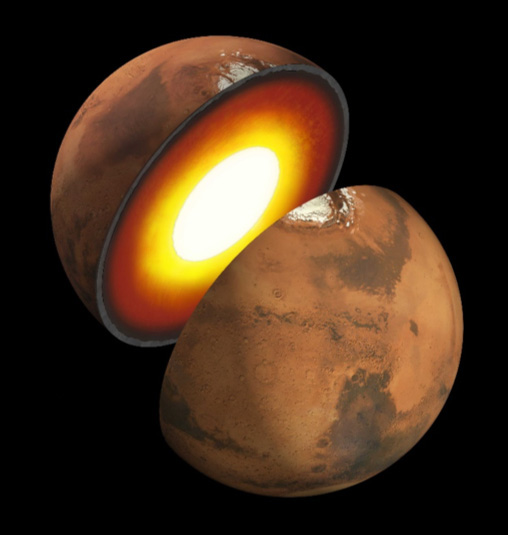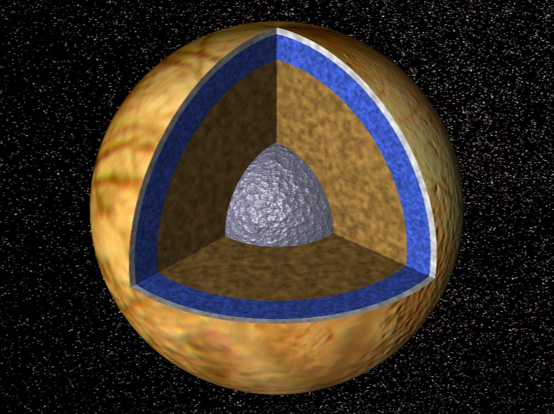Studies of planetary interiors and geophysics at JPL focus on the solid bodies of the Solar System. Planetary bodies studied at JPL include the terrestrial planets Mars, Earth, and Venus; rocky satellites such as the Moon and Io; dwarf planets, including Ceres and Pluto; asteroids, including Vesta and Psyche; and the icy ocean worlds Europa, Ganymede, Callisto, Enceladus, and Titan. These bodies are studied using geophysical data interpretation, modeling, and laboratory measurements.
Research topics in this area include:
- interior structure, geochemistry, mineralogy, and habitability
- dynamics of the lithosphere, mantle, and core
- gravity and magnetic field interpretation
Current Challenges

Planetary interior and geophysics research at the Jet Propulsion Laboratory is geared towards addressing the following challenges:
What the near-subsurface properties and structures of planets?
The advent of ground-penetrating planetary radar is revolutionizing our understanding of Mars and other planetary objects. High-power radar instruments are key to peering through the ice shells of Europa and Ganymede with the planned Europa Clipper and JUICE mission concepts. Remote sensing, even from telescopes on Earth, allows geodetic interpretation of interior structure. The HARISSA asteroid observing program uses this approach.
How do planet interiors evolve through time?
With combined geophysical measurements—such as gravitational, electromagnetic, seismic, and thermal—we can understand the structure of planetary bodies, including the size of any metallic core, and the temperature and composition of the overlying rocky material. This approach is being used by the InSight mission at Mars.
What is the nature of extraterrestrial oceans?

Geophysical measurements can also reveal the thicknesses of ice-covered oceans, their icy lithosphere, and of the high-pressure ice phases that probably reside at the seafloors of the large moons of Jupiter and Saturn. Laboratory measurements revealing the chemical properties of these materials at pressures and temperatures occurring in ocean worlds allow us to model the interior structures and processes, thus improving our ability to interpret geophysical measurements. Results of the Cassini mission are still providing new insights into Saturn’s moons Enceladus and Titan. The planned Europa Clipper and JUICE missions will provide unprecedented details about Jupiter’s moons Europa, Ganymede, and Callisto. Future mission concepts such as the Europa Lander and Dragonfly could use seismology and other methods to reveal the interior structures of Europa and Titan, respectively.